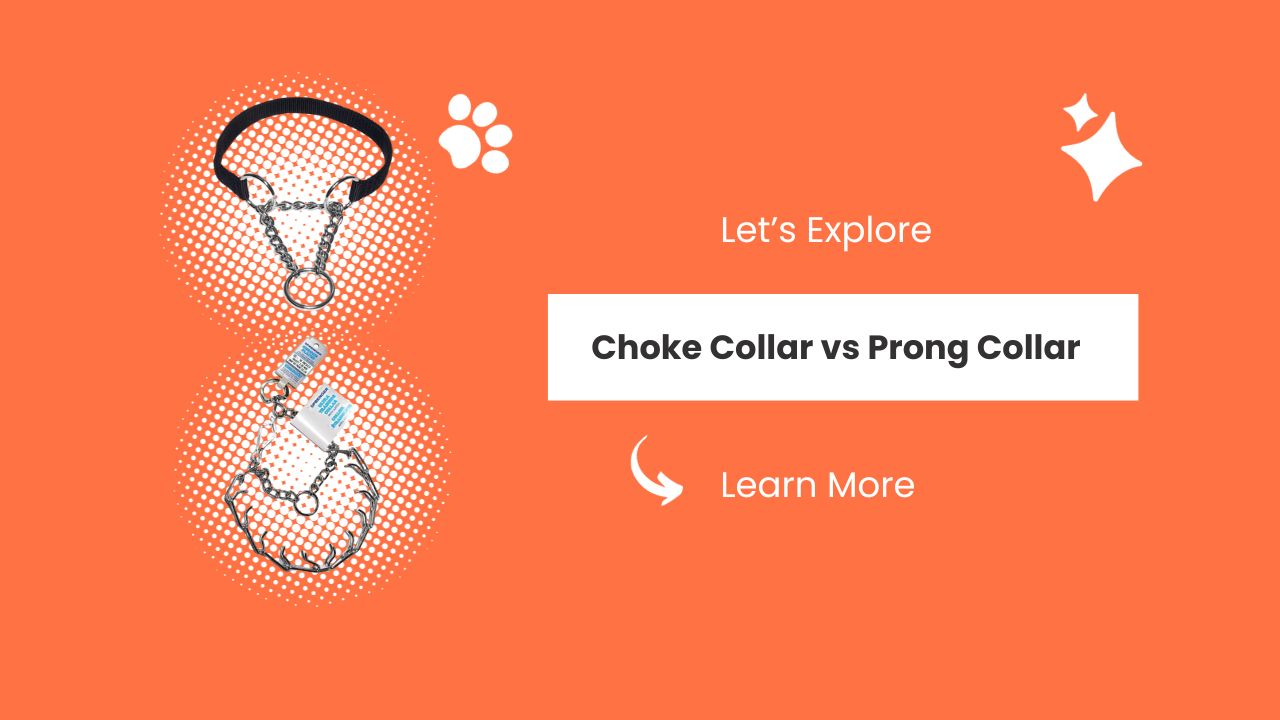If you’re a dog owner, you’ve probably come across discussions about training collars. Among the various options available, choke collar vs prong collars are two that often spark debates. Both have their pros and cons, but choosing the right one for your furry companion is crucial.
So if you are struggling to choose between a chock collar and a prong collar for training your furry companion? You’re not alone.
This post is designed for understanding the key differences between chock collar vs prong collar, helping you make an informed decision for your beloved pet.
In this blog post, we’ll break down the differences between choke collar vs prong collar to help you make an informed decision that ensures your dog’s safety and happiness.
So let’s get started
Understanding Choke Collars
Choke collars, also known as slip collars or chain collars, are made of a chain or fabric loop that tightens around your dog’s neck when you pull on the leash.
The idea behind this design is to create discomfort when your dog pulls, teaching them to associate pulling with discomfort.
Pros of Choke Collars:
- Simplicity: Choke collars are straightforward to use and adjust, making them accessible for dog owners of all experience levels.
- Effective for some dogs: In the hands of a knowledgeable trainer, choke collars can be effective for certain dogs that respond well to aversive training methods.
Cons of Choke Collars:
- Risk of injury: Misuse of choke collars can lead to injury, especially in smaller breeds or dogs with fragile tracheas. Constant pressure on the neck can cause damage or even strangulation.
- Negative associations: Some dogs may develop fear or aggression due to the pain they associate with choke collars. This can hinder the training process and harm the bond between you and your pet.
Now Let’s Understanding Prong Collars
Prong collars, also called pinch collars, consist of interlocking metal links with blunted prongs on the inside. When pressure is applied, these prongs gently pinch the dog’s neck, simulating the way a mother dog corrects her puppies.
Pros of Prong Collars:
- Control and safety: Prong collars distribute pressure evenly, reducing the risk of injury compared to choke collars. They are often considered a safer alternative for dogs with respiratory issues or those prone to pulling.
- Quick learning curve: Many dogs respond positively to prong collars, learning to walk on a leash without excessive pulling in a shorter time.
Cons of Prong Collars:
- Misuse risk: Just like with choke collars, improper use of prong collars can lead to harm and distress for your dog. It’s essential to consult a professional dog trainer to ensure correct usage.
- Limited effectiveness: Prong collars may not be suitable for all dogs, especially those with sensitive dispositions. Some dogs may become anxious or fearful when wearing one.
Choosing the Right Collar
The choice between a choke collar and a prong collar ultimately depends on your dog’s temperament, size, and specific needs. Here are some guidelines to help you decide:
- Consult a Professional: Before making a decision, seek guidance from a qualified dog trainer or behaviorist who can assess your dog’s personality and recommend the most appropriate training collar.
- Gradual Introduction: If you decide to use a training collar, introduce it to your dog gradually and ensure it fits correctly to minimize discomfort.
Conclusion of Choke Collar vs Prong Collar
In the debate of choke collar vs prong collar, there’s no one-size-fits-all answer. It’s crucial to prioritize your dog’s safety and well-being, using the collar as a tool for training rather than a punishment device.
Always seek professional advice and consider positive reinforcement techniques as your primary training approach.
With patience, consistency, and love, you can help your furry friend become a well-behaved and happy companion.

